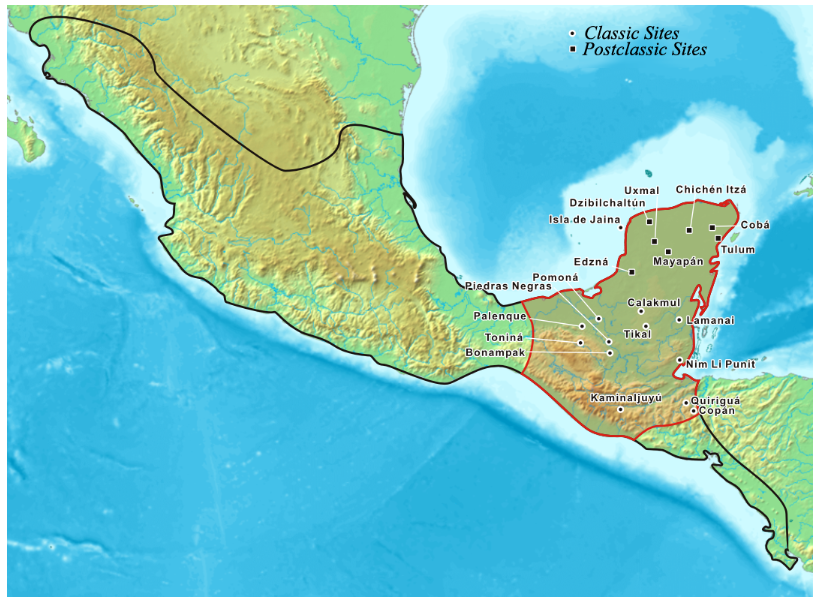The ancient Maya civilization, known for its towering pyramids, advanced writing system, and sophisticated calendar, thrived in Central America for over a thousand years. Today, the ruins of great cities like Tikal, Copán, and Palenque remain hidden within dense jungles, leaving modern explorers and historians puzzled by one lingering question: What caused the sudden collapse of this once-mighty civilization?

Discovering the Lost Cities
In the early 19th century, American explorer John Stephens and British artist Frederick Catherwood journeyed into the jungles of present-day Mexico, Guatemala, and Honduras. Their discoveries of abandoned stone temples and intricate carvings shattered the prevailing belief that the Americas had no ancient civilizations comparable to those of Egypt or Mesopotamia. The Maya, it turned out, had built an advanced society, but by the time Europeans arrived, most of their great cities had long been abandoned.
The Maya Heartland: A Harsh Environment
Contrary to popular belief, the Maya did not live in a uniform rainforest environment. Their territory stretched across the Yucatán Peninsula and Central America, encompassing dry scrublands in the north and wet, hilly jungles in the south. Despite heavy rainfall in some regions, water was often scarce due to the porous limestone bedrock, which absorbed rainwater rather than allowing it to collect on the surface. The Maya overcame this challenge by constructing reservoirs, canals, and underground storage systems, but these solutions had their limits—especially during prolonged droughts.
A Fragile Agricultural System
The Maya civilization relied heavily on maize (corn), which formed the staple of their diet alongside beans, squash, and chili peppers. However, unlike civilizations in the Old World, they lacked large domesticated animals like cattle, horses, or oxen, which meant they had no beasts of burden to assist in farming or transportation. Instead, they used human labor to maintain their agricultural systems, which included slash-and-burn farming, raised fields, and terracing.
Despite these efforts, their agricultural system had weaknesses:
- Low Protein Diet: Maize provided essential calories but lacked sufficient protein, making their diet less resilient to food shortages.
- No Large-Scale Storage: Unlike Andean civilizations that could preserve potatoes for years, the humid climate made long-term maize storage difficult.
- No Pack Animals or Wheels: Without horses or oxen, trade and military expeditions relied on human porters, limiting their reach and efficiency.
A Civilization of Rival City-States
Unlike the centralized empires of the Aztecs or Incas, the Maya civilization was politically fragmented. It consisted of numerous independent city-states, each ruled by a king who claimed divine authority. These city-states frequently engaged in warfare, forming alliances and rivalries that shifted over time. While this system allowed for regional diversity and cultural flourishing, it also made the civilization vulnerable to internal conflict and external pressures.
The Sudden Decline: What Happened?
By the late 8th and early 9th centuries, many major Maya cities in the southern lowlands experienced a sharp decline. Archaeological evidence suggests that a combination of factors led to their downfall:
- Prolonged Droughts: Studies of lake sediments and cave formations indicate that severe droughts struck the region during this period, devastating agriculture.
- Overpopulation and Resource Depletion: As cities grew, deforestation and soil depletion reduced agricultural yields, making it harder to support large populations.
- Internal Warfare and Social Unrest: As resources became scarce, conflicts between city-states intensified, further destabilizing the region.
One striking example is Copán, a powerful city in present-day Honduras. At its peak, it had a population of about 27,000, but environmental degradation and internal conflicts led to its abandonment by the early 9th century.
The Legacy of the Maya
Although the great cities of the Classic Maya period collapsed, the Maya people did not vanish. Their descendants still live in Mexico, Guatemala, Belize, and Honduras, preserving many aspects of their ancient culture, including language, traditions, and agricultural practices.
The story of the Maya serves as a warning for modern civilizations. Climate change, deforestation, and resource mismanagement played a significant role in their downfall—issues that remain relevant today. By studying their successes and failures, we can gain valuable insights into sustainability and resilience in the face of environmental challenges.
The once-lost cities of the Maya continue to captivate explorers, historians, and travelers alike, reminding us of both the brilliance and fragility of human civilization.

No comments yet.